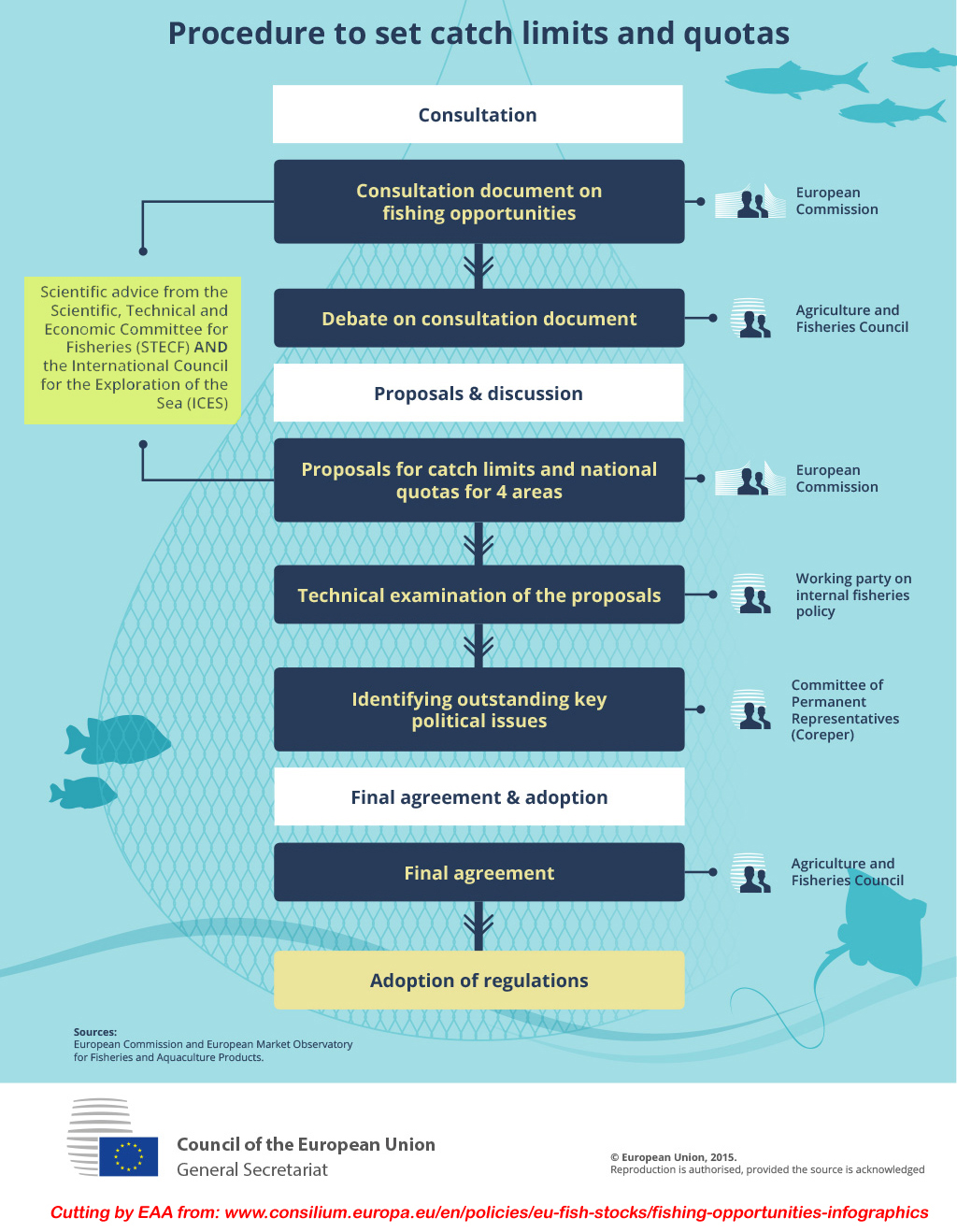ICES advice for 2016 - issued 30 June 2015
See at the bottom of this page more information about and links to the scientific advisory bodies ICES and STECF.

"
ICES advises that when the MSY approach is applied,
total landings (commercial and recreational) in 2016 should be no more than 541 tonnes. ICES cannot quantify the corresponding catches. ICES advises that a management plan is urgently needed to develop and implement measures to substantially reduce fishing mortality throughout the range of the stock."
EAA comment: 541 tonnes equals 46% of the catches estimated for this year.
Previous years: Between 2010 and 2013 average Sea bass landings were 5,667 tonnes (commercial landings + recreational lharvest, which according to
ICES (2013) "could amount to 20% of total fishery removals of sea bass"). ICES advised that in 2014 "commercial landings should be no more than 2707 tonnes". The advice for 2015 was even less harvest: 1155 tonnes and for the first time this amount should INCLUDE the recreational harvest.
The biomass has been declining since 2005
- and will continue to do so in 2016 due to poor recruitment

SCIENTIFIC, TECHNICAL AND ECONOMIC COMMITTEE FOR FISHERIES (STECF)
PLENARY MEETING, 9-13 November 2015, Brussels
EAA comment: (See further below more about the advisory bodies STECF and ICES. We are happy that STECF has said this (page 5 and 6):
- "4.1. Addendum to sea bass advice in PLEN 14-02 STECF notes an error in PLEN 14-02 where the proportions of sea bass catches taken in target and non-target fisheries were inappropriately assigned. (..) Generally, catches of seabass in ICES IVb,c & VIIa,d-h can be broadly split into three categories: (i) recreational; (ii) commercial fisheries targeting seabass, and; (iii) fisheries where seabass are taken as a commercial by-catch in mixed demersal fisheries. Based on 2010-2013 data, recreational fisheries account for 26% of the overall catch (commercial and recreational); commercial targeted fisheries account for 34% (mid-water pair trawls and lines) and; other commercial fisheries account for 40% of the overall catch. (..) STECF notes that with the exception of pelagic midwater trawl fishery and line fisheries, the current catch statistics are of an insufficient granularity to categorise bass as being either caught in targeted or non-target fisheries."
EAA comment: Bycatch is a tricky issue. It is a variable, which can be reduced at will by commercial fishers by changing to more selective gear and/or avoid or move away from an area with many fish of the sorts, which would end up as bycatches. Fisheries management should encourage and demand reduction of bycatches, not endorse bycatches as unavoidable.
ICES and STECF
ICES: The International Council for the Exploration of the Sea (ICES) is an independent global organization that develops science and advice to support the sustainable use of the oceans. ICES is contracted by the European Commission to, among other things, give advice on TACs (Total Allowable Catches).
STECF: The Scientific, Technical and Economic Committee for Fisheries (STECF) is the European Commission's 'own' advisory body. The STECF consist of 30 to 35 members; scientific experts in the fields of marine biology, marine ecology, fisheries science, nature conservation, population dynamics, statistics, fishing gear technology, aquaculture, and the economics of fisheries and aquaculture.
ICES and STECF in the procedure to set catch limits and quotas:
